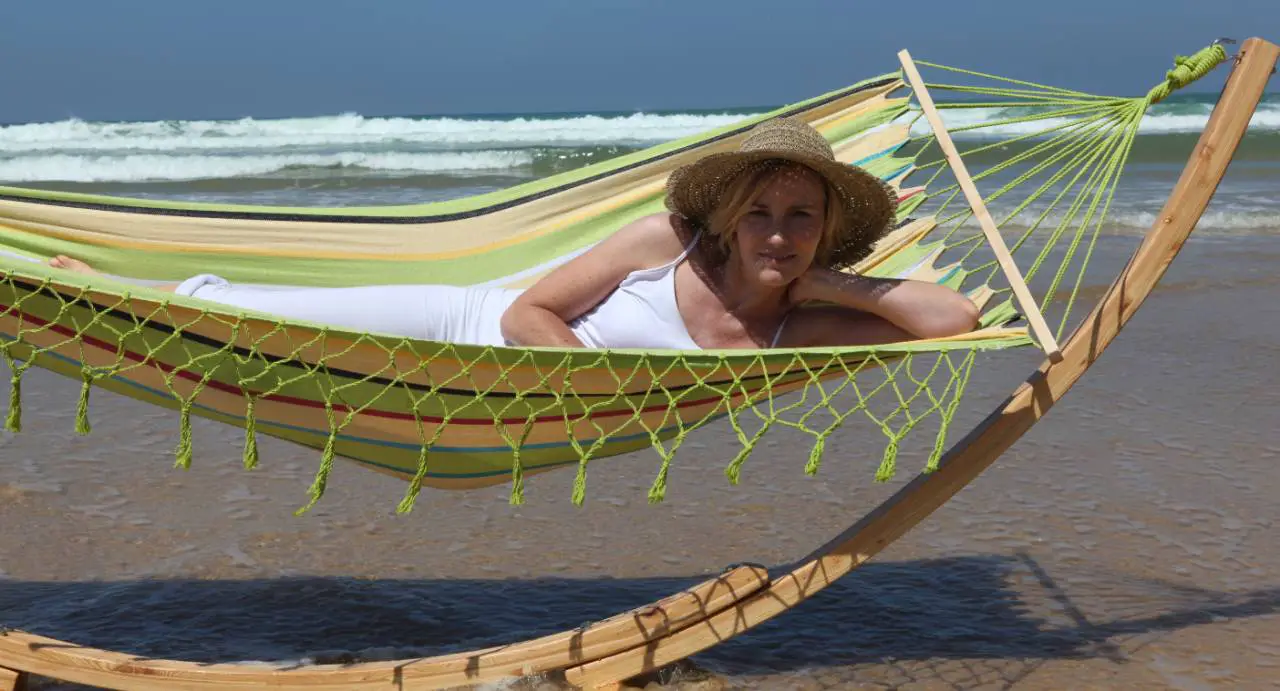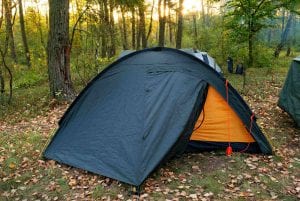Heading out to the beach? Imagining sun-baked, white sands and rocking gently in the cool ocean breeze? Well you’re in the right place because this article looks at all the different options you have for choosing and setting up a beach hammock. We’ll have you hanging in a hammock on the beach in no time!
If you don’t want to read the whole article and just want to skip to a recommendation, then I recommend Wise Owl Hammocks as a fantastic piece of kit for most people’s beach-hammock-needs. They’ve got a great selection of sizes and colours all at a very affordable price point. Check them out here.
But actually, things are a bit more nuanced than than that, so do read on to dive a little deeper into the subject and help you get the perfect set up.
Why use a beach hammock?
There are countless reasons to bring a hammock to the beach. But whether you are looking to kick back for a day on the sand or sleep in it overnight while doing some beach camping, the main reason is that it’s super-relaxing! From being gently rocked about, to the feel of the sea breeze on your face and the smell of the salty sea spray… Heaven!
But how to set one up?
Setting Up a Hammock at the Beach
Do you want to set your hammock up on the sand or in the treeline? And if you’re planning to set it up in the treeline, are they palm trees or normal trees?
1. How to set up a hammock on the sand
Obviously the beach is short on places to sling a hammock. You might be lucky enough that there’s some sort of wooden beach cabana available with ready-made hooks. Alternatively, you can hope there are some posts or cabins placed the perfect distance apart.
If you want to chance it, make sure you bring plenty of extra paracord or hammock straps to give you the most flexibility.
But if you want to be certain, you’re probably going to want to take a hammock stand. Look for something lightweight like the Swiftlet portable hammock stand by Kammock (you can check out my review of the Swiftlet here or read the reviews on Kammock’s website here).

This large wooden hammock stand is probably a bit impractical for your holiday, but you can buy some excellent portable stands that will work perfectly, allowing you to completely chill on the beach…
2. How to set up a hammock with palm trees
Some people think that they can’t use a hammock on the beach where they’re headed because the beach is home to only palm trees. However, this is far from the truth, and it’s not difficult to set up a hammock on a palm tree. The main difference is that instead of relying on ropes to fasten your hammock, you’ll use eyebolts or small screws.
Start by measuring your hammock. The trees should be spaced apart about a foot longer than the overall length of your hammock. Then, drill holes in each tree about five feet above the ground. Screw in your eye bolts and attach a chain to each one. Then, connect your hammock. You’ll be able to enjoy the beach breeze as you relax in style.
Palm trees are great choices for hanging your hammock because they tend to be exceptionally durable and shade-giving. Just make sure you avoid any falling coconuts!
3. How to set up a hammock on normal trees
Avoid any tree that looks weak, young, or overly small. Trees that produce large amounts of sap should also be crossed off your list, as these will attract insects or vines. Steer clear of trees like pines, cottonwoods, or hackberries.
Always use a tree-protective strap when you are setting up your hammock. As with setting up a hammock on a palm tree, make sure you measure the distance between the trees. Throw a rope around the trunk or branches to the tree, and then insert the non-looping end into the loop on the opposite side. Tighten it. Make sure the rope is wrapped around the tree at shoulder height. This will prevent you from sagging in the middle of the night!
Are trees on the beach public or private?
Always research the laws of the beach where you will be camping, as some trees or publicly or privately owned. Some beaches are privately owned or offered for public use through an easement – meaning hanging your hammock might be violating some property laws. Others may be publicly owned, but there could be regulations surrounding the trees.






